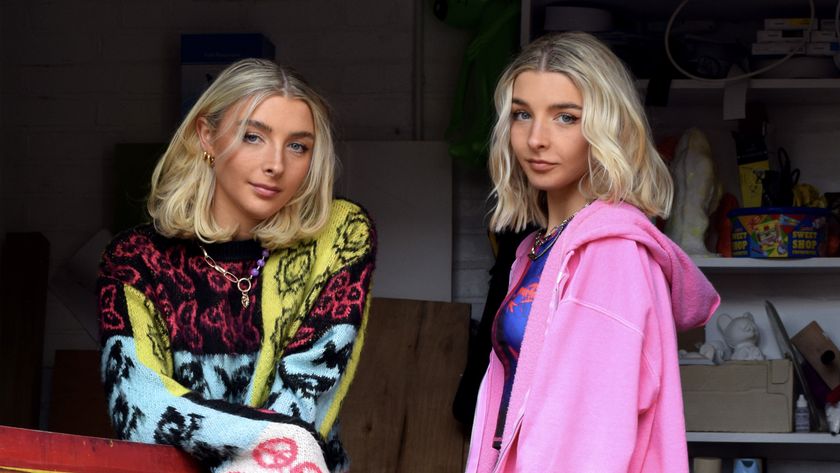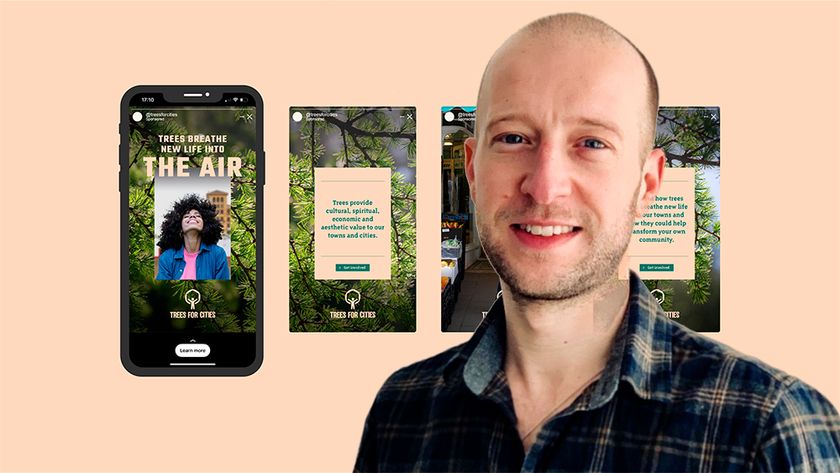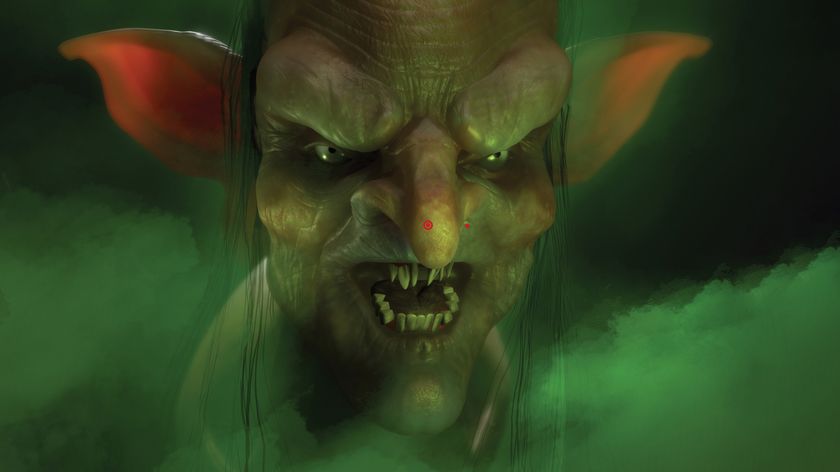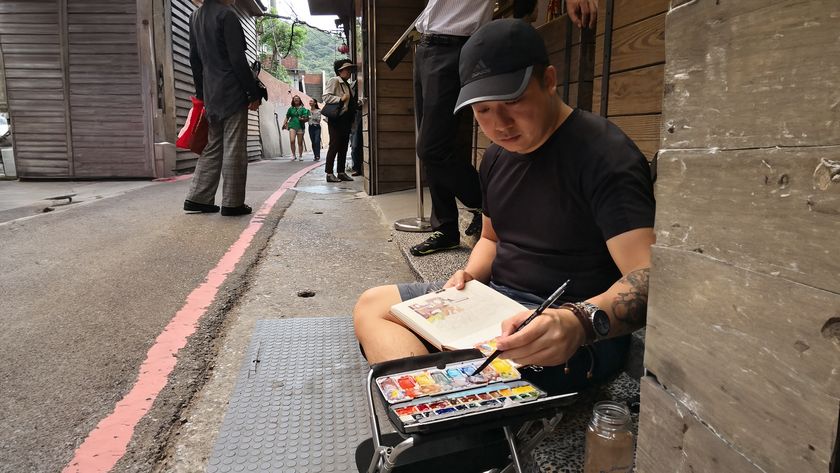How to network successfully: 19 pro tips
Discover how to get in with the right people and make meetups and social media work for you.

Carving out a career as a successful creative isn't just about doing great work and building up an impressive design portfolio, you also have to make sure the right people see it. Getting your name and face known is central to building your career. Some people are terrified by the idea of networking and selling themselves, especially out in the 'real world' and away from the relative comfort of social media.
But it's really nothing to be scared of. Simply adopt a positive attitude, design a business card to hand over to people you meet, and follow these tips on how to network like a pro. You'll soon be on your way to self-promotion success...
01. Follow the golden rule
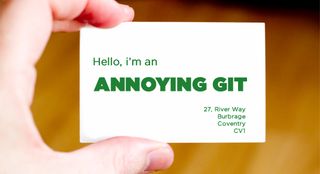
The golden rule when it comes to how to network is not to come on too strong. You're aiming to extend your creative network by meeting similar-minded people, so you're in a better position to hear on the grapevine of potential work opportunities, happenings or moves in the industry.
It's not about schlepping around design events and shoving your folio or business card under everyone's noses. That's just rude. Be polite and friendly, rather than forceful and self-serving.
02. Show genuine interest
Creative networking is very organic. If you have a genuine interest in design, you'll naturally gravitate towards those who share that interest, and with whom you might want to collaborate in the future.
It's a slow burn process. This isn't the creative equivalent of speed dating, where you bounce from person to person asking: What's your going rate? Any jobs at your place? Would you like to see my PSDs? No, no, no.
Instead, take an interest in the designers, creative directors or technologists you encounter socially. Through your conversations you'll naturally pick up tips and advice about finding work, managing clients or dealing with annoying creative event speed-daters. And it will only help you extend your network that bit further.
03. Spot the differences
It's not about staying in your lane: seek out people who produce work in a slightly different field to yours. Don't be afraid of this, because there will almost certainly be things you do that they don't. Which means you could both be a great fit for future projects together.
04. Use social networks
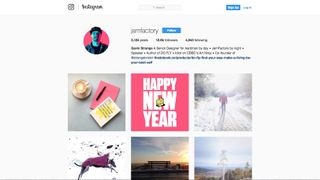
If you're not comfortable with face-to-face networking there is, of course, the less-imposing internet, with any number of social networks that will help you get in touch with like-minded designers.
Twitter is the obvious choice; it's a great way to find fellow creatives to share banter, work and industry knowledge with, and it's the perfect place to post your latest work (with fingers crossed that it'll pick up loads of retweets).
But beyond Twitter there are plenty of places to make friends and get your work seen. Instagram, Dribbble, Behance, Pinterest and DeviantArt are all ideal places to post your latest creations, and if your work moves then don't forget Vimeo and YouTube.
Even Snapchat, with its visual focus, has networking potential. But don't overstretch yourself to the extent that you're spending half the day updating your social shizzle; keep things to a small handful of networks that work for you and are popular within your specialism. Check our golden rules for social media, and advice on how to make social media work for you to help you plan your online networking strategy.
05. Go to meetups...
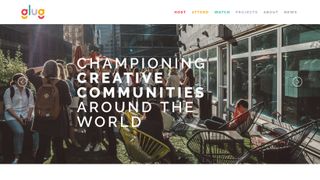
Creative types are a social bunch and there are plenty of local meetup events for you to go along to and throw your creative two cents in. A big one is Glug, which now runs events all over the world, but there are plenty of options to choose from. Unless you're really out in the sticks, chances are you'll be able to find an event to suit you within reasonable travel distance.
So whether you're after Ladies, Wine and a Bit of Design, or want to mingle with other Designers+Geeks, there's a meetup for you.
06. ...or arrange your own
A lot of meetups have different chapters – so if your city is missing the meetup you really want to attend, you could always bite the bullet and arrange one yourself. Although it's a bit of a commitment, it's a great way to meet others in your area who have similar interests. And it adds kudos to your creative resume.
07. Seek out creative clusters
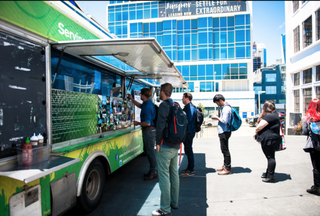
Outside of virtual meetups, there are areas where fellow creative bods naturally gravitate, and social scenes have sprung up. Go to any given point in London around Shoreditch or in Brooklyn's Gowanus you'll find creative clusters around bars or cafes.
Meet friends there and do a bit of networking (chatter, banter, who's doing what and with whom). Every area has these clusters, you just need to find one near you.
08. Hit the pub

At the end of a conference, event or road show, a load of attendees usually swarm out of the auditorium at a rate of knots to race for trains or to beat the rush hour. Critically, this is when most of the bonding and networking happens, as there'll always be a few who want to 'go for a quick pint' in the local pub.
Usually these are genuinely passionate and interesting creative folk (and you might find some speakers/event organisers will tag along as well). Keep your ears primed for chatter about any after-event happenings and pop along, because it's a great way of extending your creative network.
Of course we advise you to drink responsibly and remind you that waking up in a hedgerow, public park or in a different county is an indicator that your networking efforts have become a little counterproductive.
09. Conquer conference dread
Going to an event or conference on your own can be a bit daunting, especially if it's for a few days. The thing to remember is that you won't be the only one who's feeling a bit of a Billy no-mates. Take the initiative and use Twitter to find out who in a similar field to you is also attending. Then drop them a friendly Tweet and arrange a meetup in the bar or over a coffee.
When people are transplanted away from their normal environments they become much more social and willing to make buddies. If work comes from it then great, but even if it doesn't, you'll extend your network a bit and make some new friends in the process.
10. Pick events that encourage networking

Not all design conferences do all they can to encourage networking between attendees. Sometimes, in the breaks between talks and other formal sessions, you'll see a depressing sea of uncommunicative faces buried in laptops – not an environment where it's easy to strike up conversations with stranger. At other times, it'll be the opposite – you won't be able to move for people introducing themselves in an open manner and with a smile on their face.
The difference is often down to the fact that the conference organisers haven't just paid lip service to the idea of networking, but actually put things in place to ensure it happens.
For example, at our own web design conference series, Generate, we make a conscious effort to get people mingling, whether that be via a pre-event quiz or chilled after party. The same is true of our new event for CG artists, Vertex. Check out our Events channel for news about upcoming events.
11. Find your design heroes
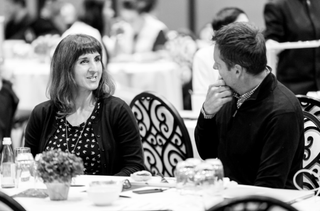
Look for your design heroes on Twitter and strike up a conversation. Follow those who inspire you and periodically ask for opinions or advice on your own work. Pointers and tips from those in the know are invaluable for pushing you in the direction of those who can help make your work reach a wider audience.
And if you spot them about at a conference, go over and say hello (just make sure they're not about to go on stage, first).
12. Learn to listen
Listening is a skill. It's an absolute art form. Most of us only half listen when we're engaged in social communication, because we're already planning in our heads what to say next. Try to turn this off and truly listen to what's being said. You'll retain more and your attentiveness will be picked up by the speaker, which means they're more likely to listen to you in return.
13. Ask open-ended questions
If you're feeling a bit awkward or nervous at an event and want to know how to keep conversations bubbling along, then try to remember to ask open-ended questions. Questions that start with such words as 'who', 'what', 'where' and 'when' open up a conversation, whereas questions that only require a closed response such as 'yes' and 'no' tend to shut things down. It's an old trick but a good one.
14. Start your own industry-related blog
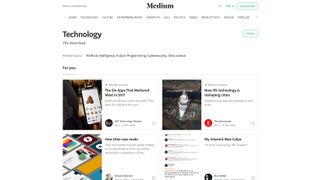
Create your own creative beacon by starting a blog about what inspires you. Give people something to know you by besides your own creative work by giving something to the creative community.
A blog is not only an outlet for what floats your creative boat but is also a great conversation starter, either virtually or at meetups. You'll find tons of advice about content in our article How to start a blog: 10 pro tips, and check out our pick of the best free blogging platforms.
Alternatively, platforms like Medium offer a space for you to share long blog posts without the commitment of setting up a custom space.
15. Keep up with new work
If you keep up with who the innovators, creators and movers-and-shakers in the business are, you'll never be stuck for something to say either on Twitter or at meetups. New work should naturally draw you in, and getting out of a siloed way of working by keeping up to date with the industry around you will reap rewards long term. Networking doesn't happen in a vacuum.
16. Seek referrals
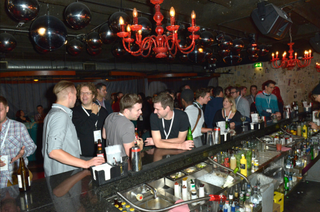
At any networking do or social gathering you'll always find someone who knows someone who needs something that you do. Sometimes this is just hot air, but at others it could be a genuine opportunity.
The key thing is to try to nail down the pertinent information – who, what and when? If you don't want to pester your new contact during the evening, make a note of their details and email them for more information the next day.
17. Remember it's a two-way street
Networking is about listening and helping others. It's a case of 'you scratch my back and I'll scratch yours' (just remember, you often have to scratch first and don't always expect a scratch back). Adopt a philanthropic approach to networking and you won't ever be disappointed by it.
18. Don't be too sensitive
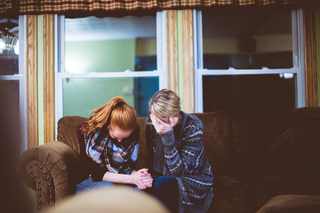
If you speculatively contact someone by Twitter or email and they don't reply to you, try to take it on the chin. You're not going to set everyone's world on fire and quite frankly, if these people can't be bothered to return an email or a Tweet, would you want to do any business with them anyway?
19. Play nice
There's a misguided notion that to give a 'critique' of something means to 'rip it to shreds to show how clever you are'. In fact, the best critiques are those that are balanced and examine what worked and what didn't.
This also means they're harder to do. But position yourself as someone who knows how good creative works and is genuinely enthusiastic about what DID work. Being an overly critical smart arse won't win you any recommendations, or indeed entice anybody to want to network with you. For more guidance, take a look at our article on how to give and get more from art critiques.
Contributions: Creative Bloq staff
Related articles:

Thank you for reading 5 articles this month* Join now for unlimited access
Enjoy your first month for just £1 / $1 / €1
*Read 5 free articles per month without a subscription

Join now for unlimited access
Try first month for just £1 / $1 / €1
Get the Creative Bloq Newsletter
Daily design news, reviews, how-tos and more, as picked by the editors.

Kerrie Hughes is a frequent contributor to Creative Bloq, and was once its editor. One of the original CB crew, Kerrie joined the team back in 2013 after moving from her role as staff writer on 3D World. Since then she's written regularly for other creative publications such as ImagineFX, Computer Arts and Digital Camera World. After a stint working for the police, Kerrie is back reviewing creative tech for creative professionals.



